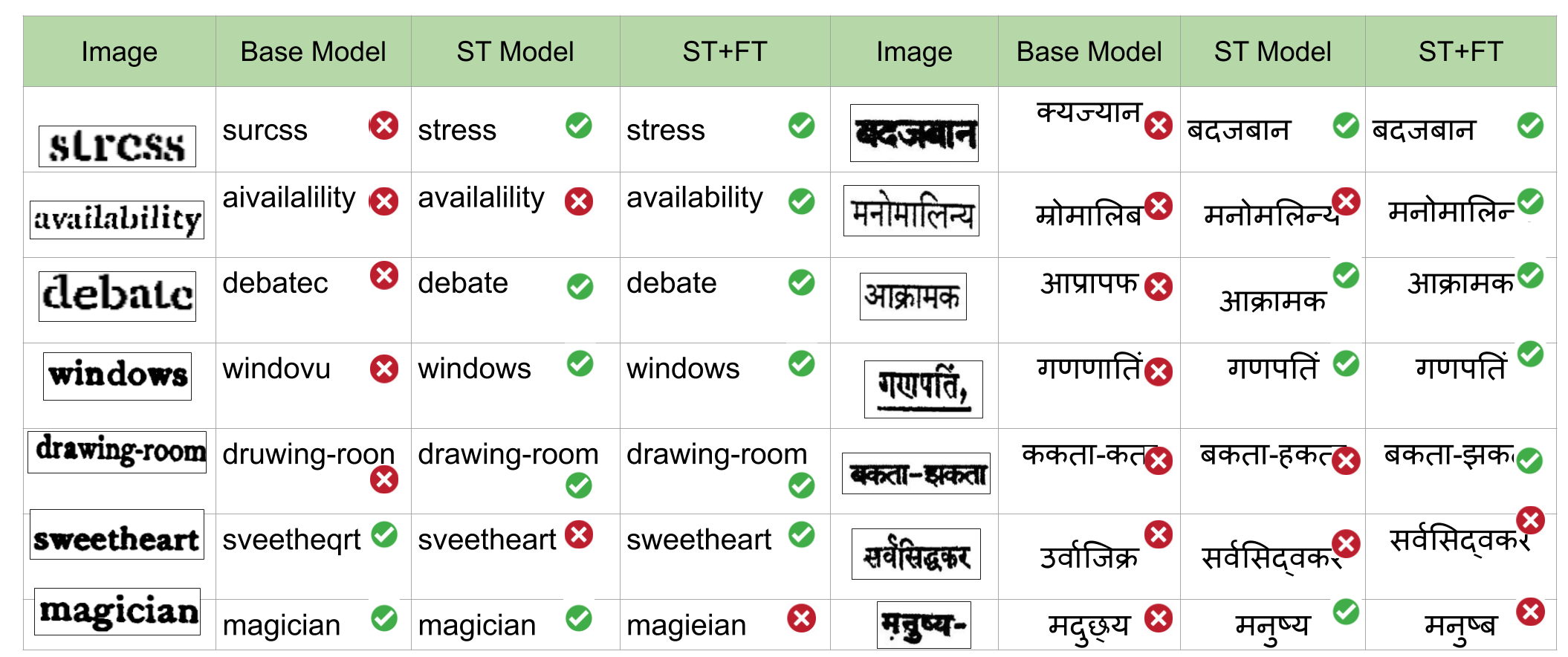Pytorch implementation of our paper Adapting OCR with limited labels
- This work was tested with PyTorch 1.2.0, CUDA 9.0, python 3.6 and Ubuntu 16.04.
- requirements can be found in the file.
- Also, please do a
pip install pytorch-pretrained-bertas one of our kind contributors pointed out :) - command to create environment from the file is
conda create -n pytorch1.4 --file env.txt - To activate the environment use:
source activate pytorch1.4
- Supervised training
python -m train --name exp1 --path path/to/data
-
Main arguments
--name: creates a directory where checkpoints will be stored--path: path to dataset.--imgdir: dir name of dataset
-
Semi-supervised training
python -m train_semi_supervised --name exp1 --path path --source_dir src_dirname --target_dir tgt_dirname --schedule --noise --alpha=1
- Main arguments
--name: creates a directory where checkpoints will be stored--path: path to datasets--source_dir: labelled data directory on which ocr was trained--target_dir: unlabeled data directory on which we want to adapt ocr--percent: percentage of unlabeled data to include in self-training--schedule: will include STLR scheduler while training--train_on_pred: will treat top-predictions as targets--noise: will add gaussian noise to images while training--alpha: set to 1 to include the mixup criterion--combine_scoring: will also take into account the scores outputted by a language model
Note: --combine_scoring works only with line images not word images
- Data
- Use trdg to generate synthetic data. The script for data generation is included
scrips/generate_data.sh. - Download two different fonts and keep the data pertaining to each font in source and target dirs.
- Use one of the fonts to train data from scratch in a supervised manner.
- Then finetune the trained model on target data using semi-supervised learning
- A sample lexicon is provided in
words.txt. Download different lexicon as per need.
- Use trdg to generate synthetic data. The script for data generation is included
